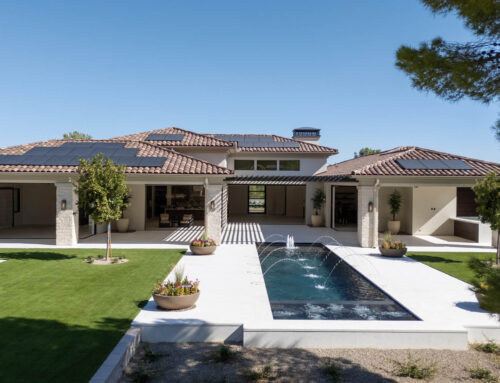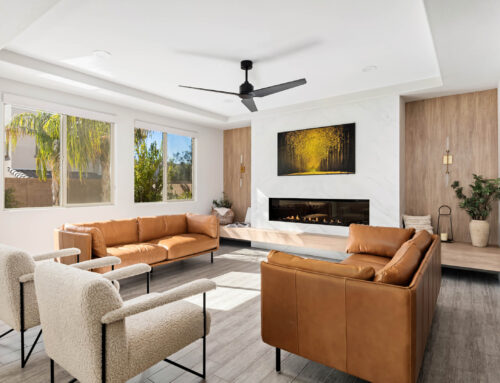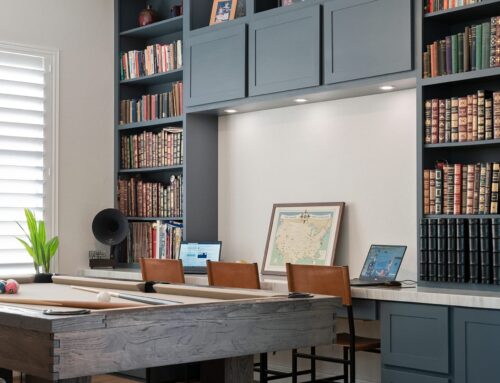Creating Multi-Functional Spaces: Versatile Home Addition Ideas
As the demands of modern living continue to change, so too must our homes. The traditional division of space into distinct rooms with singular purposes is gradually giving way to more flexible layouts. This shift not only reflects changes in lifestyle, such as the rise of remote work and the need for family-friendly environments, but also showcases a growing appreciation for design that prioritizes adaptability and efficiency. Embracing multi-functional spaces can lead to a more harmonious and balanced living experience, where every corner of the home serves a purpose and enhances the quality of life.
The Need for Multi-Functional Spaces
Modern life demands flexibility. With more people working from home and families spending more time together, the need for adaptable spaces has never been greater. Multi-functional spaces allow for a seamless transition between work, play, and relaxation, all within the same environment. This adaptability is not just a convenience; it is increasingly becoming a necessity as our homes need to support a broader array of activities throughout the day.
As the boundary between personal and professional life blurs, creating spaces that can effortlessly shift in function is vital. For instance, a dining area that can transform into a home office or a children’s playroom that doubles as a workout zone can significantly enhance a home’s functionality. The key is to integrate flexibility into the design from the outset, considering how each space can serve multiple purposes without compromising on comfort or aesthetics. This approach not only meets the practical needs of today but also future-proofs your home for evolving lifestyles.
Benefits of a Multi-Functional Home
- Maximized Space Utilization: Every square foot is used effectively, reducing clutter and increasing functional space. This can lead to a more organized and visually appealing home, where each area has a distinct purpose yet can adapt to changing needs with minimal effort.
- Cost-Effective: Combining multiple functions into one area can be more economical than creating separate spaces. This approach can save on construction costs and ongoing maintenance, as fewer rooms mean fewer resources are required for heating, cooling, and cleaning.
- Enhanced Lifestyle: These spaces can cater to diverse needs, from a home office that doubles as a guest room to a living area that transitions into a home theater. Such versatility ensures that your home remains a vibrant and engaging place, capable of hosting everything from family gatherings to solitary retreats.
- Sustainability: Multi-functional spaces can contribute to a more sustainable lifestyle by reducing the need for additional construction materials and energy consumption. A thoughtfully designed home that uses fewer resources aligns with broader environmental goals and can also reduce utility bills.

Innovative Home Addition Ideas
1. The Versatile Kitchen Island
A kitchen island is more than just a countertop; it can serve as a dining area, a workspace, and a storage unit. By incorporating a sink or a cooktop, the island becomes a central hub for cooking and socializing. Adding bar stools transforms it into an informal dining space, perfect for quick meals or entertaining guests. Additionally, consider integrating built-in shelves or cabinets underneath the island for extra storage, keeping your kitchen organized and clutter-free.
The versatility of a kitchen island extends beyond its immediate functions. With the right design, it can become a focal point of the home, a place where family and friends naturally gather. Incorporating elements like a wine rack, a charging station for devices, or even a small herb garden can enhance its usability and aesthetic appeal. As a multi-functional feature, the kitchen island exemplifies how thoughtful design can elevate both form and function in a home.
2. The Convertible Home Office
With the rise of remote work, a home office is no longer a luxury but a necessity. Designing a space that can transition from a professional setting during the day to a personal retreat in the evening is crucial. Consider a fold-away desk or a Murphy bed to effortlessly switch between work and relaxation modes. Additionally, using modular storage solutions can help keep the area tidy and adaptable to various needs.
Incorporating elements like adjustable lighting and ergonomic furniture can further enhance the functionality of a convertible home office. The ability to modify the ambiance and layout based on the task at hand can make this space both productive and comfortable. For instance, adding a cozy reading nook or a small meditation area can provide much-needed breaks during the workday, promoting overall well-being and work-life balance.
3. The Dynamic Living Room
The living room can serve multiple functions, from a cozy family gathering spot to an entertainment center. Incorporate modular furniture that can be rearranged to suit different occasions. A sectional sofa, for example, can be reconfigured for movie nights or family game sessions. Adding elements like a foldable coffee table or a hidden projector screen can further enhance the room’s versatility.
In addition to furniture, consider the use of decorative screens or curtains to partition the living room temporarily, creating distinct zones for various activities. This approach allows for simultaneous use by different family members, whether one is enjoying a movie while another reads quietly. Incorporating versatile storage options, like built-in shelves or a media console with hidden compartments, can also help maintain a clean and organized space.
Outdoor Multi-Functional Spaces
4. The Flexible Patio or Deck
Outdoor spaces offer limitless possibilities for creativity. A patio can be designed to accommodate both relaxation and entertainment. Consider adding a pergola for shade, a fire pit for warmth, and flexible seating arrangements that can be easily moved to create an open space for parties or intimate gatherings. Incorporating outdoor lighting and weather-resistant materials can further enhance the usability of these spaces throughout the year.
Creating zones within the patio or deck can maximize its functionality. For example, designate areas for dining, lounging, and gardening, each with appropriate furniture and accessories. Installing outdoor speakers and a weatherproof television can transform the space into an outdoor cinema, while a built-in barbecue or kitchen area can serve culinary needs. By blending functionality with comfort, your patio or deck can become an extension of your home’s living area.
5. The Garden Office Pod
For those who need a quiet space to work or pursue hobbies, a garden office pod can be an ideal solution. These standalone structures provide privacy and tranquility, away from the main living area. They can also be used as a guest room or a personal studio, adding value and versatility to your property. With the right design, a garden pod can be both a functional workspace and a creative retreat, inspiring productivity and relaxation.
Garden office pods are also an excellent opportunity to incorporate sustainable design elements. Consider using eco-friendly materials, solar panels, or green roofs to minimize the environmental impact. The addition of large windows or skylights can enhance natural lighting, reducing the need for artificial light and creating a more pleasant working environment. As a flexible space, a garden pod can evolve with your needs, serving different purposes over time.
Design Tips for Multi-Functional Spaces
Prioritize Your Needs
Start by identifying the primary functions you need the space to serve. Is it more important for you to have a home gym, a playroom for the kids, or a quiet reading nook? Understanding your priorities will guide your design decisions. This clarity will help you allocate resources effectively, ensuring that the most important functions are supported by the right features and furnishings.
Once priorities are established, consider how these functions might change over time. Being open to future possibilities can influence design choices, such as opting for neutral decor that adapts to different uses or selecting furniture that can be easily reconfigured. This forward-thinking approach ensures that your multi-functional space remains relevant and useful as your lifestyle evolves.
Invest in Quality, Versatile Furniture
Furniture plays a crucial role in defining the functionality of a space. Invest in pieces that can easily adapt to different uses. A sofa bed, a foldable dining table, or stackable chairs are all great options for creating a flexible environment. Quality furniture not only enhances the aesthetic appeal of your home but also ensures durability and comfort, key factors for spaces that will see frequent use and transformation.
When selecting furniture, consider materials and finishes that will stand up to varied uses and frequent rearrangement. Opt for pieces with built-in storage or modular components to maximize utility. By choosing versatile and durable furniture, you create a foundation for a space that can effortlessly transition between different functions, maintaining both practicality and style.
Use Smart Storage Solutions
Clutter can quickly diminish the functionality of a space. Use built-in shelves, under-bed storage, and multi-purpose furniture to keep your space organized and efficient. By incorporating storage into the design of each room, you ensure that every item has a place, reducing visual chaos and creating a more pleasant environment.
Smart storage solutions also include innovative ideas like wall-mounted shelving, hidden compartments, and dual-purpose furniture. These can significantly enhance a room’s capacity to house essentials without compromising on space. For instance, a coffee table with hidden storage can double as a toy chest or a place to stash throw blankets, making cleanup quick and easy.
Incorporate Technology
Smart home technology can enhance the versatility of your space. Consider installing adjustable lighting, automated blinds, or a sound system that can be controlled with a smartphone app to create the perfect ambiance for any occasion. Technology can seamlessly integrate into multi-functional spaces, offering convenience and enhancing the user experience.
Incorporating smart technology also means considering energy efficiency. Devices like programmable thermostats and smart plugs can help manage energy consumption, while smart security systems offer peace of mind. By embracing technology, you can create a home that is not only adaptable but also more connected and efficient, enhancing your overall quality of life.

Real-Life Examples of Multi-Functional Spaces
The Murphy Bed Revolution
Murphy beds have made a significant comeback in modern home design. They allow a single room to serve as both a bedroom and a living area. Today’s designs are sleek and often include additional storage or desk space, making them a practical choice for small apartments or guest rooms. The modern Murphy bed is more than just a fold-out bed; it’s a comprehensive solution for maximizing space in urban living environments.
These beds are now available in a variety of styles, from minimalist designs to models that incorporate shelving, lighting, and even integrated seating. This versatility allows homeowners to customize their space according to their needs and taste, creating a multifunctional room that doesn’t compromise on comfort or aesthetics. The Murphy bed exemplifies how innovation in design can transform a seemingly simple concept into a highly functional asset.
The Dual-Purpose Dining Room
In many homes, the dining room is used only on special occasions. By incorporating a wall-mounted desk or a foldable table, this space can also serve as a home office or a crafting area. This dual-purpose approach ensures that the room is used daily, rather than just during holidays. By reimagining the dining room’s potential, homeowners can enhance the functionality of their home without the need for additional space.
In addition to furniture modifications, consider using decorative elements like rugs or curtains to define separate areas within the dining room. This visual separation can help maintain a sense of order, even when the space is being used for multiple functions simultaneously. By creatively rethinking the dining room, you can transform it into a dynamic space that supports both daily activities and special gatherings.
Conclusion
Creating multi-functional spaces is about more than just saving space; it’s about enhancing your lifestyle and adapting to the changing needs of modern living. By implementing these versatile home addition ideas, you can transform your home into a dynamic environment that caters to all aspects of life. Whether you’re working, entertaining, or simply unwinding, a well-designed multi-functional space can make your home more enjoyable and efficient.
Consider these ideas as a starting point for your next home project, and enjoy the benefits of a space that truly works for you. Embrace the potential of your living environment by exploring innovative design solutions that prioritize flexibility, functionality, and style. As you embark on this journey, remember that the goal is not just to create a home that meets your current needs, but one that can evolve with you and your family, offering comfort and convenience for years to come.
Transform Your Home with Kingdom & Co.: Stylish, Versatile, and Innovative Solutions
If you’re ready to transform your home into a versatile and stylish space, Kingdom & Co. is here to help bring your vision to life. Our expert team specializes in creating innovative, multi-functional designs tailored to your unique needs. Whether you’re looking to revamp a single room or undertake a whole-home renovation, we have the solutions to enhance your living environment. Contact Kingdom & Co. today to schedule a consultation and explore how we can help you achieve a home that adapts effortlessly to your lifestyle. Visit our website or call us directly to get started on your journey to a more functional and beautiful home.
































